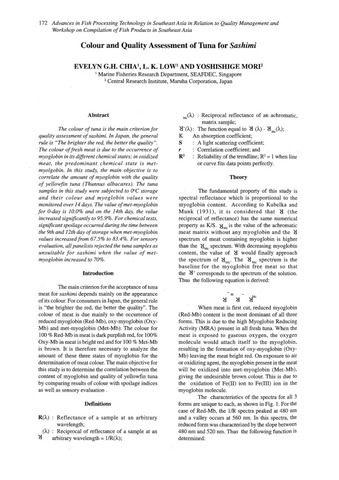Colour and quality assessment of tuna for sashimi
Share
Abstract
The colour of tuna is the main criterion for quality assessment of sashimi. In Japan, the general rule is The brighter the red, the better the quality . The colour of fresh meat is due to the occurrence of myoglobin in its different chemical states; in oxidized meat, the predominant chemical state is metmyolgobin. In this study, the main objective is to correlate the amount of myoglobin with the quality of yellowfin tuna (Thunnus albacares). The tuna samples in this study were subjected to 0°C storage and their colour and myoglobin values were monitored over 14 days. The value of met-myoglobin for 0-day is 10.0% and on the 14th day, the value increased significantly to 95.9%. For chemical tests, significant spoilage occurred during the time between the 9th and 12th day of storage when met-myoglobin values increased from 67.5% to 83.4%. For sensory evaluation, all panelists rejected the tuna samples as unsuitable for sashimi when the value of met-myoglobin increased to 70%.
Suggested Citation
Chia, E. G. H., Low, L. K., & Mori, Y. (1997). Colour and quality assessment of tuna for sashimi. In K. K. Hooi, L. K. Low, & P. Y. Lim (Eds.), Proceedings of the seminar on the advances in fish processing technology in Southeast Asia in relation to quality management, Singapore, 29 October - 1 November 1996 (pp. 172-182). Singapore: Marine Fisheries Research Department, Southeast Asian Fisheries Development Center.

